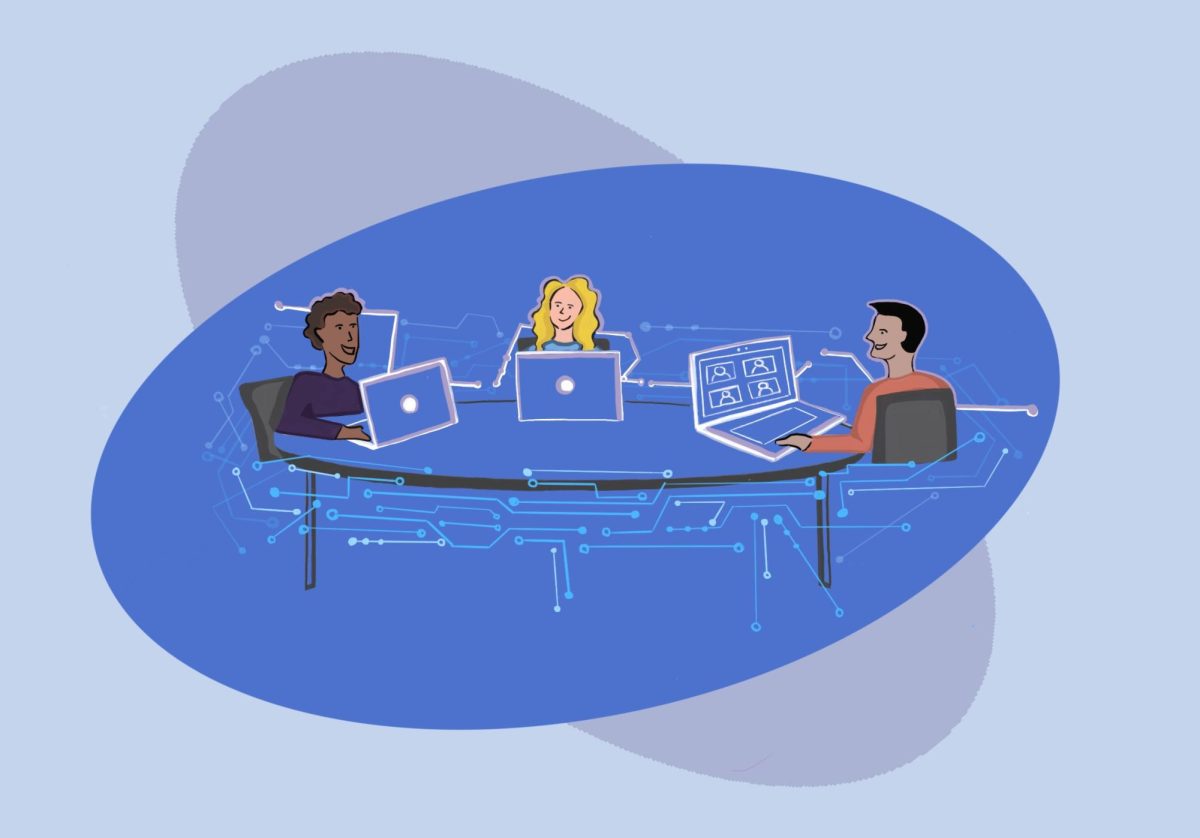For many students, taking asynchronous classes is a way to check off some of the boxes of general education. The University enables large numbers of students to register for the online alternative to ease overcrowding.
Students taking asynchronous classes are rewarded for their choice with an easy workload, flexible schedule and free time. However, they often miss out on an important part of the college experience: meeting their peers and professors. Professors can bridge this gap by regularly booking study rooms to allow their students to benefit from classroom interaction.
UT’s foray into digitally delivered classes began before the COVID-19 pandemic. In the fall of 2013, Introduction to Psychology was opened to the world as the first synchronous massive online course.
Since then, the University has expanded its methods of educating students. Now, we can take traditional face-to-face courses, hybrid courses that meet once a week, synchronous lectures online or complete a course without ever seeing another person in the class.
A central problem with asynchronous courses is their tendency to limit interaction between professors and students. Informatics junior Shasa Kolar said in his case, he felt he got less individual attention.
“When people grade you, they’re going to grade you as student number 100 of 1,200, instead of Shasa Kolar, the fifth out of 20 in the class.”
Asynchronous classes also reduce the amount of educational activities students can participate in, potentially hurting students’ educational experience. One study found that students in mostly synchronous classes received more feedback from their teachers. They were also able to participate in learning activities with a higher potential to support social interaction, including lab or practical work. Furthermore, these students reported gaining procedural and social skills.
Asynchronous classes also make it difficult for students to connect with their peers. Second-year classical languages and philosophy double major Katherine Page referred to her British Literature course, which meets for a quiz on Fridays.
“I don’t know the name of a single person in my discussion group,” Page said.
Discussion and feedback are important parts of the learning process, allowing students to understand where they went wrong and helping them to improve in the future.
Engaging with other students is an important part of developing an understanding of course content, but is often impossible in asynchronous courses. By providing students with a space to meet, UT professors can give students in asynchronous classes access to a more diverse community.
Colleges like UT are a melting pot of people and ideas, bringing individuals from different backgrounds together in stark contrast to an increasingly digital world. However, some students don’t have the option to wait until after college to start working full-time.
Assistant professor Liz Moliski teaches Foundations of Info Technology Management, which offers both synchronous and asynchronous options to students.
“There’s nothing like in person, so as soon as we could have in person office hours, I set (them) up,” professor Moliski said. “Some people are there because they have no other choice. … For those people, in-person office hours are huge.”
Moliski believes that community plays an important role in education and recognizes the difference in performance she saw between class styles. She also talked about the technological barriers her students experienced when engaging with the course, many of which she could only provide guidance on in person.
The different solutions professor Moliski has implemented demonstrates the fact that improving asynchronous classes is a multifaceted challenge that requires more than simply booking a room for students to meet. However, providing students with an in-person space would be an important step towards creating a more engaged community on campus.
Chandran is an advertising sophomore from Plano, Texas.















